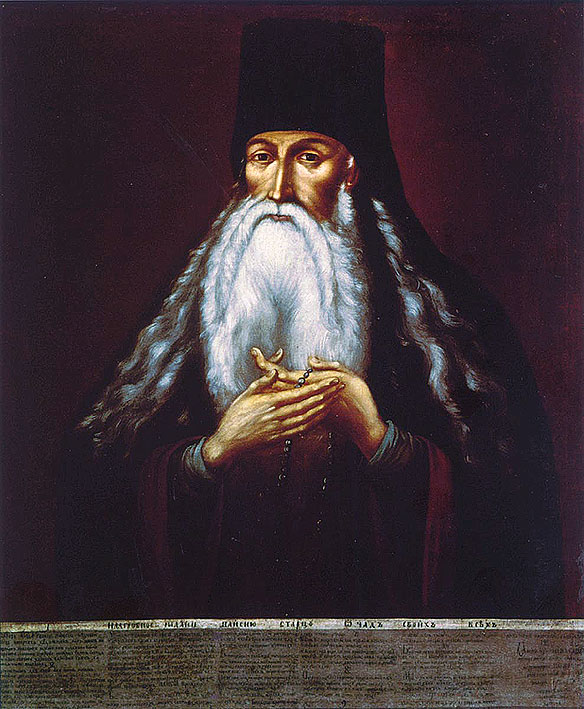The movement of Kollyvades as it appears throughout history and in the present – 3
10 May 2014The Kollyvades have caused the hesychastic revival in the Holy Mountain and were the bearers of the Patristic tradition. They were the ones to preserve the development and way of life of the Holy Mountain for over thousand years in contrast to the Anti-Kollyvades, who had been influenced by the European religious Enlightenment, which advocated the secularization of the Church and the adaption of orthodox monasticism. The latter led an imperfect monastic life, the so-called “rough monasticism” and have had no experience of divine Grace through the Orthodox tradition.
That’s why they opposed long liturgical services, the frequent participation in the Holy Communion and Confession, the allotted reading of spiritual books, the mental exercise and the practice of Jesus’ prayer. They exhibited no internal spiritual life. The Kollyvades were attesting to the role of the Holy Mountain as the carrier of the genuine Patristic tradition. They stood by the line of the Great Fathers of the Church – particularly of the hesychast and niptic Fathers of the 14th Century – and did not permit the adaption of orthodox monasticism as in Russia under Tsar Peter the Great, who was an ardent westerner. He had promoted the westernization of the Orthodox faith which culminated with the anti-monastic policies of Empress Katherine the Great.
Even though the Anti-Kollyvades were more numerous and used illicit means as we have already said and occasionally enjoyed the support of certain Patriarchs, they did not manage to crash the Kollyvades’ movement. The Kollyvades support for the Orthodox tradition and the fresh, widespread revitalization which was set in motion and was founded on the revival of hesychasm, soon passed onto Thessaloniki, Thessalia, Epeiros, Peloponissos and the Aegean islands. Most of the Hayiorite Fathers who were exiled or who exiled themselves went to islands near the Holy Mountain in the Aegean Sea.
One such émigré was hieronmonk Nefon from Chios, together with four others-Gregorios, Agathangelos, Ananias and Joseph. These, having stayed several years in Samos, Patmos and Ikaria, finally went to Skiathos, where Nefon founded in 1794 the renowned monastery of the Annunciation, which became the most important centre of activity for Kollyvades outside the Holy Mountain. Two literary persons from Skiathos who later became the spiritual backbones of the Kollyvades movement, were Alexandros Moraitides (latter day Andronikos monk) and Alexandros Papadiamantis.
St Macarius Notaras was constantly touring the Aegean islands to support and convey the Patristic spirit to the flock, particularly to the island of Chios along with St Athanasius Parios.
Blessed elder Ierotheos began his monastic life in the Vatopedi Skete of St Demetrius, where Dionysos Siatisteas became his spiritual father. However, after his elder’s death and during the second round of persecutions against Kollyvades he is forced to leave Mount Athos. He arrives in Poros and Hydra, where he establishes the holy monastery in honor of Prophet Elijah. His brother, Ierotheos, becomes the new owner of the then abandoned monastery of the Zoodohou Pegis in Loggovarda in Paros. It is from this monastery that Filotheos Servakos, the well known to us abbot, hailed.
St Arsenios the New, along with his spiritual father, Daniel, left the Holy Mountain and visited the islands of Paros, Sikinos and Folegandros. St Arsenios stayed in Paros where he became abbot of the monastery of St George. He lived there a very spiritual life, full of grace and comforted many people, steering them away from the ignorance which prevailed on the island.
Konstantinos Oikonomos, Kosmas Flamiatos, Christopher Panayiotopoulos (the renowned Papoulakos), Ignatios Lambropoulos and St Nicholas Planas were some of the many spiritual figures of the 19th Century who had been kneaded with the Kollyvades’ spirit and became active in Peloponissos and Athens.
Moreover, other Orthodox countries, like Romania and Russia, have directly or indirectly benefited by Kollyvades as it is manifested by the revival of hesychasm in these countries. In the 18th Century, Romanians and Russians were initiated to the neglected Patristic spirituality by St Paisios Velichkovsky, who had lived for eighteen years in Kapsala of the Holy Mountain and in the monastery of Prophet Elijah which he founded. Then he later visited Moldova, latter day Romania, and became the founder of the ascetic “Starets”: namely of the holy Russian Elders, who by their saintly and charismatic words and deeds comforted not only the illiterate villagers but also the mighty intellectuals of their countries.







